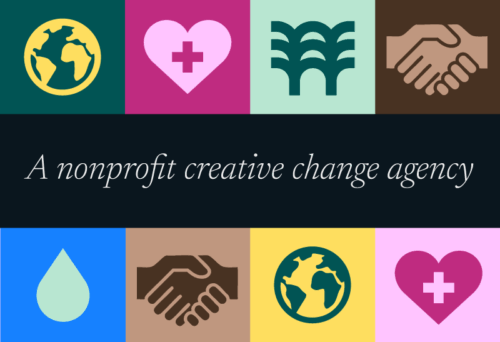
If you ever need to explain to someone the source of anger around racism and oppression in the U.S., think about using a relatable analogy.
When you’re having computer trouble, have you ever been so frustrated that you slam the keyboard up and down, bang on the keys, pound your fist on the desk or scream in rage? Haven’t we all?
This is a relatable way that our bodies are feeling rage. We can’t help it. When I think about why this happens, it boils it down to this: input met by a lack of responsiveness and empty promises. I’m giving my computer all the right inputs–pressing the keys, moving the mouse–but it’s not responding the right way, and not quickly enough. And yet, I’ve been promised this machine will work for me. I paid good money for it, and I need it to get stuff done. And yet it just…isn’t…working.
Now instead of something as inconsequential as a computer meltdown, imagine your health, safety and life are on the line, or the health, safety, and lives of your friends, family and community.
Hopefully this thought experiment gives you a tiny glimpse of the frustration, pain, and anger experienced by Black people in this country, who have suffered four centuries of oppression, brutality and injustice. They’ve been leading the charge as active members of our democracy, fighting for the changes that need to happen for a more just, equitable society. And year after year, those in power do not respond quickly or decisively enough to truly make a difference.
In the wake of the historic uprising after the murder of George Floyd, organizations and brands scrambled to issue statements expressing solidarity with the movement for Black lives. Unfortunately, many of the milquetoast BLM statements may have done more harm than good. Why? Well, when organizations who issue #BlackLivesMatter statements say, “we’re listening” or “we’re looking forward to more conversation,” the implication is, “please tell me in the exact right way so that I can find the exact right opportunity to help you.” They demonstrate that the organization is just now paying attention to an issue that has plagued Black people for four centuries. For people who are already very frustrated with the lack of action and progress in this country, the naiveté and ignorance exhibited by watered-down, poorly-thought-out statements can enrage more than comfort. The system should work for everyone the way that it was promised, and this nation is far behind on mending its broken contracts.
Reacting with anger in response to these broken promises is a reasonable and relatable response. But the organizational reactions to passion-fueled protests and actions with a series of statements, blog posts, newsletters, reading lists, etc. have led us at Resource Media to think more critically about external shows of solidarity and true action that makes a difference.
Equity theater is white organizational culture in action
My coworker Adam Hymans recently used the term “equity theater” and I thought it was really poignant. Theater implies that an organization is putting on a show for the public to see. When the curtains close, the show is over and whatever you were performing is just put to bed. Theater can look impressive, but it in no way represents real life, and it isn’t nearly as hard.
When you need to put out a statement, not because it will actually help your community, but because you are afraid of what you’ll look like if you don’t, that’s white organizational culture in action. Other signs that this culture is driving your actions: 1) if you’re comparing your organization to another one that released their own statement out last week, 2) if you’re thinking about how the optics of your statement “positions” your organization to be viewed as competent on racial equity issues; and 3) if you’re asking Black staff and other staff of color to review your statement and even spend uncompensated time on it to ensure it’s legit.
What should an equity statement have?
Sapna Sopori has written a terrific blog post on this topic. What struck us as particularly useful, along with her clearly-outlined ingredients of an effective statement, is the context in which she discusses why statements by historically white-led organizations (HWLs), however well-crafted they may be, have been met with suspicion and cries of inauthenticity. She writes: “The historic refusal of HWLs to stand with BLM and take real anti-racist action in their organizations has actually contributed to the need for movements like BLM to begin with. In all of those statements out there, there has been little to no acknowledgment of these ironies. Is it any wonder why I and so many others are questioning the authenticity of these statements?”
A couple more ideas on what we believe these statements should include:
- A power analysis. How have people in communities you’re a part of, contributed to racism in this country? This ensures your statement goes beyond your good intentions to meaningfully examine how your organization, in its everyday operations, has contributed to racial inequity. This is a good starting point for undoing that harm. We have all played a role. For example, land trusts that limit who, when, and how people access land rights decisions–or political campaigns that regularly offer unpaid yet prestigious internships to “friends of the family.”
- Authentic, vulnerable storytelling. As communicators, we know the value of storytelling, and how stories act like duct tape for your issue, your brand, and your message. Stories bind together various different ideas and intentions and make things sticky and memorable. It could be a story about a moment of realization or even a hypothetical story that envisions a future world.
Beyond statements
Ok, so if statements are not the panacea, then what else can you do? You may have seen the hashtag #ShowMeTheReceipts as a way to challenge historically white-led organizations and companies about meaningful actions that have been at their fingertips all along. And last month Color of Change launched BeyondtheStatement.org, a campaign hub aimed at holding corporations accountable for their “Black Lives Matter” statements with tangible policy changes.
Some of the things we’ve done include anti-bias training and salary disclosures, which lead to diversifying staff and board and equitable compensation. As well, sharing revenue in the form of grants, in-kind services, and staff time, with organizations for whom traditional foundation grants and other revenue is out of reach. Or what about creating a distributed decision-making structure and an equity committee with a plan to let needs, feedback, and suggestions inform staff-wide policy. These are just the organizational steps. Going to the next level means creating avenues for accountability to the Black community, multicultural, multilingual, and disability access to your programs and communications, and a number of other solutions proposed by anti-racist organizations and organizers.
Let’s get vulnerable
No DEI journey is without mistakes and missteps. Resource Media as an organization began concertedly working towards equity about seven years ago, and we’ve made many painful mistakes along the way. These missteps included hiring BIPOC staff for positions that were motivated by “filling seats,” were not well thought-out, and/or lacked institutional support. On many occasions in the past, we defaulted to hierarchy, with then-white leadership making critical organizational decisions without sufficient input. We have put BIPOC staff in difficult situations, particularly when working with white-dominated institutions that had little understanding of DEI best practices. We have required emotional labor from staff who represent marginalized identities without sufficient space and time for healing and recovery. And there have been times when we have put work pressures in front of self-care and human connection, contributing to additional trauma and burnout.
With mistakes comes learning, growth, and accountability to the movements that surround our work. And we’ve learned a lot. We engaged in an organizational restructure in late 2018 to flatten our hierarchy, and we implemented anonymous annual 360 reviews for all managers, an anonymous staff survey, and regular manager conversations to create multiple feedback avenues. We created standing committees to facilitate distributed decision-making, with the “Spirit” committee tasked with addressing healing and preventing undue emotional labor. We also nurtured and made space for identity-based caucuses to create safe affinity spaces for BIPOC and LGBTQ staff to support one another and for white staff to do their own work. From a benefits perspective, we added additional personal days and a robust focus on self-care to create more space for healing, solidarity, and local community volunteerism.
We still have a long way to go, and we will continue to make mistakes as we travel on this journey toward solidarity in action. We commit to learning from our mistakes because in doing so, we continue to disrupt white-dominant culture and invite in new perspectives. We’d love to hear from you on what you’re learning–and unlearning–at this time. Please reach out to one of our staff if you have a project or problem where you’re looking for a co-conspirator.
Many thanks to my colleagues who edited this blog post: Amy Frykman, Cristina Friday and Marla Wilson.
More Insights and Resources


Winning pro-immigrant messaging in a time of injustice

